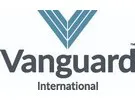After years of major economic changes resulting from COVID-19, Vanguard is checking in with its key produce leaders around the globe starting with Kirk Son, sales and procurement associate at Vanguard International who has a strong focus on Korea.
What is the current state of the fresh produce industry in Korea?
Son: Korea has always had a strong demand for fresh produce items, both locally grown and imported fruits. In recent years, the demand for Shine Muscat has experienced a remarkable surge becoming one of the most sought-after items in Korea. Additionally, the region has seen significant production volume increases of apples, pears, stone fruits and Jeju Island mandarins.
What has been the biggest change in the export market in the last few years?
Son: The emergence of local Shine Muscat grapes, which have started to dominate the Korean market. The volume of production is expected to continue to increase over the next few years. On the other hand, certain USA products, including California navel oranges, grapes and avocados, are facing challenges in terms of sales, primarily due to higher pricing. California avocados have become exceptionally difficult to sell since Peruvian avocados became available to the Korean market a few years ago. As a result, California avocados have nearly vanished from Korea since they cannot compete.
 Son says certain USA products, including California navel oranges, grapes and avocados, are facing challenges in terms of sales, primarily due to higher pricing.
Son says certain USA products, including California navel oranges, grapes and avocados, are facing challenges in terms of sales, primarily due to higher pricing.
What is the current overall economic health of the region?
Son: Korea suffered tremendous economic difficulties during the pandemic. In addition, there have been some trading challenges between Korea and China. This presents a problem since China serves as Korea’s largest customer. Lastly, the exchange rate in Korea is also fluctuating, leading importers to be more conservative.
What is the biggest challenge in your region for the industry?
Son: Korea is facing a record-low birth rate of 0.8 percent, leading to the rapid aging of its population. More than one in five adults is suffering from significant debt due to soaring housing costs and the cost of living. With the changes in family makeup, it is a pivotal moment for Korea that will greatly impact its future economic circumstances.
What other global markets are you most impacted by?
Son: While Korean is one of our primary markets, we also cater to select customers in Indonesia and Taiwan, both of which seem to have strong markets for our fresh fruits.
What are your future predictions for Korea?
Son: There are a number of factors that should be considered. The population of South Korea is 52 million. Compare that to North Korea’s 26 million. Yet North Korea holds vast potential for raw material with territory to be developed.
Stay tuned as Vanguard spends the summer speaking with more of its key produce leaders.
 For more information:
For more information:
Andrea Bava
Vanguard International USA
Tel: +1 (778) 908-1764
[email protected]
https://www.vanguardteam.com/en/










